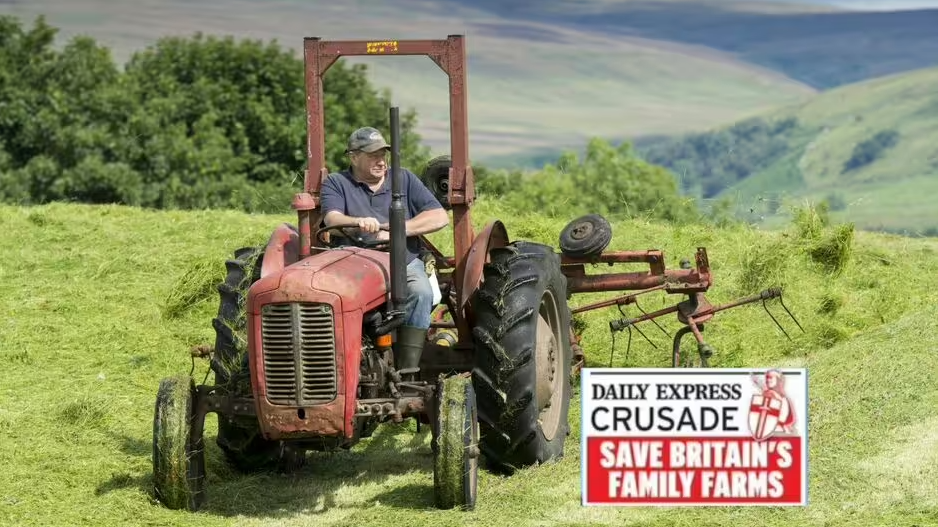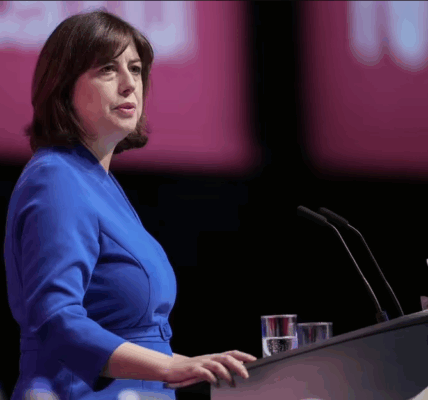Farmers have warned they risk selling their land to afford inheritance tax changes announced by Rachel Reeves.

Farms have disappeared becasue of economic pressures, a report warns (Image: Getty)
More than 1,700 farms on the outskirts of English towns and cities have disappeared since 2010, a countryside charity has warned. The loss equates to 56,000 hectares of farmland, an area similar in size to the city of Leeds, and represents a critical loss for both food security and environmental sustainability.
Graeme Willis, agricultural lead at CPRE, said: “Farms around our towns and cities produce vital quantities of food but are disappearing at an alarming rate. Every hectare of farmland lost is more than just a statistical decline, it’s an erosion of our countryside and our fundamental national resilience. Farmers are being asked to produce sustainable food, protect biodiversity, improve soil health and combat climate change – all while facing unprecedented economic challenges and pressures from development. Without proper support systems in place, we risk losing not just farms close to towns and cities but doing serious damage to the UK agricultural sector overall.”
Over 200,000 jobs in family businesses and farms could be lost because of upcoming changes to inheritance tax rules, CBI Economics warned.
It comes after Chancellor Rachel Reeves announced changes to agricultural [property relief and business property relief at October’s budget.
The Daily Express’s Save Britain’s Family Farms crusade has demanded she U-turns on her decision.
Mr Willis said: “The government should urgently join up its policies on land use, food security and agricultural support in a way that recognises the vital role of the countryside around our towns and cities.
“This means strengthening planning protections for agricultural land and providing the necessary support to farmers to both put food on people’s plates and better manage the environment for future generations.”
While the areas analysed by the CPRE represent just 11.3% of UK agricultural land, they produce an outsize proportion of foods including wheat (20.6%), oats (20.6%), barley (20%), potatoes (14.3%) and milk (13.3%).
The report added that these farms provide food security and “serve as essential green buffers” that support local ecosystems, reduce food miles and contribute £3.3 billion annually to the UK economy.
It also warned of the impact of suddenly shutting new applications to the post-Brexit Sustainable Farming Incentive (SFI) scheme.
Rural affairs minister Daniel Zeichner has insisted the sustainable farming incentive (SFI) scheme had to be closed as it’s “now fully subscribed” but the Government is designing “an improved scheme.”
A Government spokesman said: “Our commitment to farmers remains steadfast.
“This Government will invest £5 billion into farming over the next two years, the largest budget for sustainable food production in our country’s history. We are going further with reforms to boost profits for farmers by backing British produce and reforming planning rules on farms to support food production.
“Our reform to Agricultural and Business Property Reliefs will mean farmers will pay a reduced inheritance tax rate of 20%, rather than the standard 40% for other businesses, and payments can be spread over 10 years, interest-free. This is a fair and balanced approach, which fixes the public services we all rely on, affecting around 500 estates a year.”
By Roger Mortlock, chief executive of countryside charity CPRE
Last week the Chancellor touted developing the countryside around our towns and cities as the key to unlocking economic growth. But at what cost?
More than 1,700 farms, an area of land the size of Leeds, have disappeared from the edge of English towns and cities since 2010. Many of them were in the Green Belt, 14 areas of protected land, introduced by the post-war Labour government, but undermined by this one.
These lost farms are no longer putting food on people’s plates, providing tranquil green spaces for people to enjoy, or doing their bit to safeguard the natural world.
The farms that remain close to towns and cities are food-producing powerhouses.
Although they represent just over 10% of the UK’s farmland, they produce more than double that proportion of our wheat, oats and barley, along with significant amounts of potatoes and milk.
They also function as green buffers that support local wildlife, reduce food miles and contribute an impressive £3.3 billion to our economy each year.
In her speech, the Chancellor confidently announced that building on the green belt will fix the housing crisis. It won’t. It will only lead to more car-dependent, identikit estates of unaffordable homes across our countryside, damage the UK farming sector, and undermine a key environmental protection that Labour itself invented.
In England alone, more than 1.2 million homes could be built on shovel-ready brownfield sites. 1.4 million potential new homes have been granted planning permission but have not yet been built.
The reality is that large housebuilders – not the planning system or environmentalists – are to blame for the painfully slow delivery of new homes.
By deliberately restricting supply, they maximise profit for themselves. They have a role to play, but unchecked, it’s like putting the fox in charge of the hen house.
Every farm lost from the edges of our towns and cities is an erosion of UK’s countryside and capacity to feed itself.
Faced with climate change and nature in freefall, we should be celebrating those who farm the land around our towns and cities, rather than eyeing up their farmland for new homes that should be built on brownfield land.




